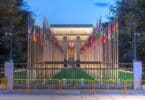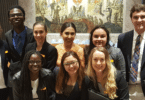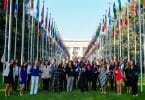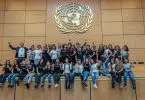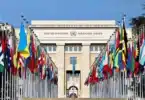Finding books on human rights topics is not difficult for those studying and working in this field. Finding relevant, challenging, and interesting books on human rights topics, however, is not always as easy. Books like Universal Human Rights in Theory and Practice by Jack Donnelly, The Tyranny of Experts by William Easterly, Development as Freedom by Amartya Sen, Human Trafficking: Interdisciplinary Perspectives by Mary C. Burke, and Disposable People by Kevin Bales are all human rights texts that present unique perspectives and information while challenging readers to bring together knowledge and actions in effective ways. These books are useful adds to any human rights student’s or worker’s repertoire.
Jack Donnelly’s Universal Human Rights in Theory and Practice (3rd Ed., 2013) is a fundamental text for those studying any area of human rights. Starting out by establishing a basic understanding of what “human rights” means, Donnelly leads up to his main premise that human rights are equal, inalienable, and universal, even with cross-cultural relativism considerations. He ultimately argues that human rights are not culturally relative because culture is not the cause or a factor in the development of human rights ideas and practices and is not necessarily for or against any particular human rights. Donnelly states, “No particular culture or comprehensive doctrine is by nature either compatible or incompatible with human rights. It is a matter of what particular people and societies make of and do with their cultural resources. Cultures are immensely malleable…” (p. 107). Using a variety of examples from different countries, cultures, and points in history, Donnelly proceeds to provide examples that support his argument of universal rights versus cultural relativism. Much of his book centers around the Universal Declaration of Human Rights, which has functioned as an authoritative body of rights, rooted in human dignity and universality, and agreed upon by most of the modern world, regardless of how they are actually played out in society. One major strength of this book is that Donnelly updates it to keep it relevant. While the first edition focuses a lot on Cold War-era examples and issues, the third edition focuses on issues of anti-genocide attitudes, the rights of sexual minorities, and the problems of poverty and political repression as consequences of development. Donnelly’s argument does get confusing and circular at times, if not dry, but even those who disagree with his premise will not deny that he offers a good foundation to human rights theories, as well as important ways to bridge the gap between theory and practice.
Amartya Sen is an important author, economist, and philosopher for anyone in human rights work to know, and his book Development as Freedom (1999) is a perfect example of his expertise and deep understanding of human development and the importance of human rights. Sen argues that human freedom should be both the means and the end of development, rather than a casualty of it, as is often the case. He advocates for an integrated approach to development that involves multiple institutions and creates freedoms such as economic opportunities, political freedom, social supports, transparency from authorities, and security for society. Stating that development often forsakes freedoms and opportunities in the name of economic and human development, Sen argues that freedom must be central to development in order to create sustainable and effective change. He also addresses concerns and critiques surrounding the universal human rights discussion, including arguments about legality of human rights, duties involved in fulfilling rights, and questions about cultural relativism. In particular, Sen uses his own experiences from and expertise in Asian culture to argue that human rights and freedoms are not dependent upon cultural values or morality. He writes, “The case for basic freedoms and for the associated formulations in terms of rights rests on: 1) their intrinsic importance; 2) their consequential role in providing political incentives for economic security; 3) their constructive role in the genesis of values and priorities” (p. 246). Even through the extensive sidebar on Asian values, Sen tries to make this book accessible to a broad audience by avoiding jargon and technical terms, even encouraging readers to skip through certain theories and arguments, particularly those that contain major flaws. Development as Freedom is an important theoretical text for anyone studying or working in human rights, especially for those in the development field.
For human rights professionals looking for a major ego check, William Easterly’s Tyranny of Experts (2013) provides just that. Though many are quick to disagree with his ultimate argument that human rights experts and development experts provide temporary solutions to deep problems and ultimately increase oppression of the poor, few can deny that his passionate writing and well-documented evidence make them second guess their work in the world. Coming off of a career at the World Bank, Easterly particularly critiques large international organizations and Western-based development ideals as the problem-causers because of their strategies for economic development in countries ruled by authoritarian dictators. He argues that development ideas primarily came about with a West-centric, discriminatory foundation: “Locating the formative years of development between 1919 and 1949 highlights a critical point: development ideas took shape before there was even the most minimal respect in the West for the rights of the individuals in the Rest” (p. 44). In particular, Easterly balks against the strategies of supporting authoritarian rulers and dictators in order to increase economies and reduce poverty. His argument is that the rights of the poor, particularly economic and political rights, are ultimately more important for their wellbeing and for their development than their material wellbeing. He states, “It doesn’t mean that we care less about the material suffering; it means that we understand that the autocrats have offered a false bargain to meet material needs while we overlook their suppression of rights” (p. 339). Easterly’s book offers a unique and challenging perspective for development and human rights workers, encouraging a change in the way we think about both human freedoms and human development.
While Mary C. Burke is lesser known outside of the Pittsburgh area, her home base for work and research, her book Human Trafficking: Interdisciplinary Studies (2013), which is vetted by other major names in human trafficking research and books, is an essential resource for anyone researching or working with this specific human rights issue. Many human trafficking books offer chapters on various aspects of human trafficking, but Burke brings in established professionals for each of those fields to add personal experience and knowledge for the readers to gain, rather than relying on her research alone. From FBI agents to lawyers to psychologists, this book covers a wide-range of topics, all centered on how these areas intersect with the problem of human trafficking and how they impact the lives of victims of trafficking. While very obviously academic in genre (complete with learning objectives, discussion questions, and a “vocab” section specific to human trafficking), the book is a broad study of the topic, looking at both the problem from both a global perspective and a US-based perspective through case studies, laws and initiatives, and even a historical overview of slavery throughout society.
This book is certainly introductory in nature, but it provides a more in-depth, expertise look at the topic than other introductory books about human trafficking. One of the major foundations of this book in comparison to others like it is that it brings the issue close to home, with a section specifically focusing on community-level responses and initiatives, which as expert Judy Hale Reed writes, “have often been more effective at providing immediate responses of prevention and service provision to victims” (p. 256). Many of the authors have first-hand knowledge of this, having worked in the field with human trafficking, particularly in Burke’s home city of Pittsburgh, Pennsylvania. The book keeps the topics concise and interesting to read, but these strengths also become its weaknesses in that the terminology and ideology behind human trafficking research is rapidly changing because of the newness of the topic and the growing literature surrounding it. In this instance, the case studies, stories, and first-hand examples offer more value than facts, figures, and definitions because they give a picture of the real problem, even in the midst of changing methodology, statistics, and estimates. Human Trafficking: Interdisciplinary Studies is a foundational text for human rights students who are specifically looking to focus on the topic of modern-day slavery.
Kevin Bales’s Disposable People (2012) is a less academic-sounding text but contains useful and compelling information about modern-day slavery based on extensive research and experience. The book looks at specific stories from five different countries that all highlight a specific type of modern slavery. The book talks about many of the lesser mentioned types, including the antiquated slavery of Mauritania, forced labor that intersects environmental hazards in South America, and children working in brick kilns and brothels out of desperation for themselves and their families. The language in the book is emotional but supported by facts and research. The final chapter offers readers a relief to the heavy reading by providing ways to get involved and engage in the issue. The book also identifies various non-profits and international organizations that are working to help victims of various forms of trafficking. Bales own experience as co-founder of Free the Slaves contributes to both his passion and his knowledge of the subject. Bales links America’s history with slavery to the current problem, telling a story of Frederick Douglass’s against Independence Day when slavery still existed. “If there are still slaves, how can you be proud of your freedom?” Bales concludes (p. 261). He encourages readers, “We can eradicate slavery. The laws are in place, international agencies like the UN are ready, but nothing will happen until the public demands action” (p. 262). Bales also provides credibility for his work by including an appendix with his research methodology and a second appendix with excerpts from international conventions against slavery. Of course, Disposable People is not an extensive study on these individual types of slavery, but it is an emotionally compelling and evidence-backed introductory text to any human rights student or professional interested in the topic of human trafficking.
Whether focusing on a specific topic like human trafficking or looking for a general human rights overview, these five books present challenging and expert perspectives on their respective topics. For students, many of these books make regular appearances in human rights classes and will add important insight to other related literature. All of them would be useful for any student or professional looking to expand their knowledge and research on human rights topics.

